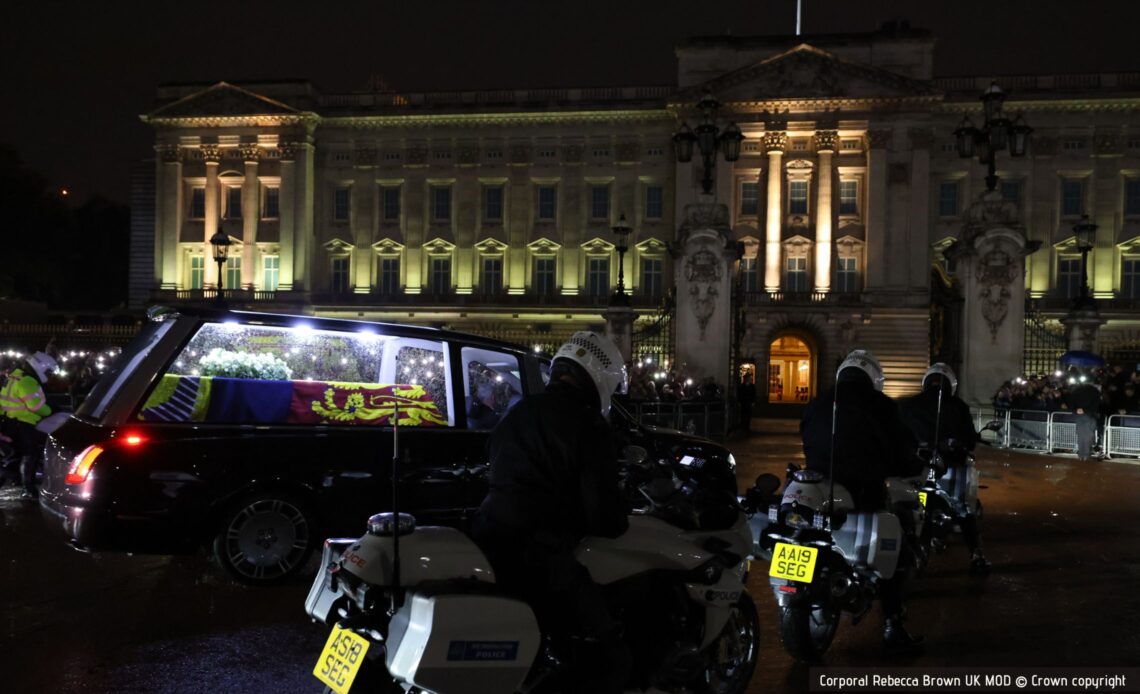
Millions of people across the world were captivated by images of the casket of Queen Elizabeth II as it was driven through London on a dark, gloomy evening. A small detail that many people might have noticed is that hearse is lit up so mourners can see the coffin clearly. This was The Queen’s idea.
The Queen specified the custom Jaguar XJ hearse be used a number of years ago when planning events surrounding her death. Constructed by Wilcox Limousines in the UK, the hearse is finished in Royal Claret – the official colour of both State and Royal vehicles.
The black vehicle features a tall roof and thin pillars allowing people to get the best view of the casket as Her Late Majesty makes her way through the streets of London. There is also a skylight on the casket compartment that is brightly lit to provide a clear view at night.
It was The Queen’s view that people should see her in death as they did in life, and felt it was important that should her hearse be transported in the dark, or in a gloomy winter evening, mourners should be able to see clearly.
This is a different hearse than what people saw when The Queen was in Scotland. In Scotland, her casket was carried by a Mercedes-Benz limousine provided by local funeral director, William Purvee.
The hearse provided by the funeral home was originally silver but was re-wrapped in black to accommodate royal protocols. Unlike the hearse being driven in England, the one used in Scotland had an extended wheelbase to allow two rows of passenger seating.
The Queen isn’t the first royal to customize a hearse. Her late husband, the Duke of Edinburgh, reworked a Land Rover Defender so his casket could be carried in the fashion of a horse-drawn gun carriage-type hearse.

